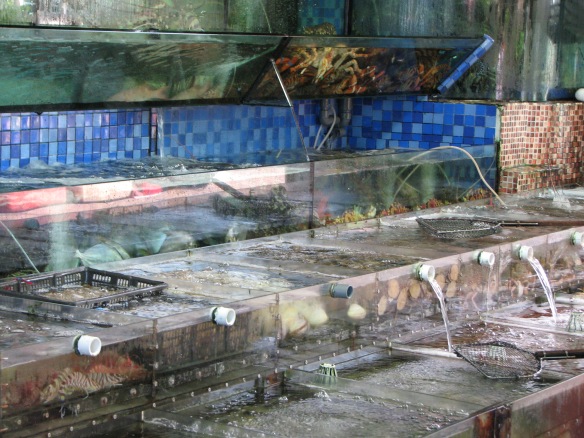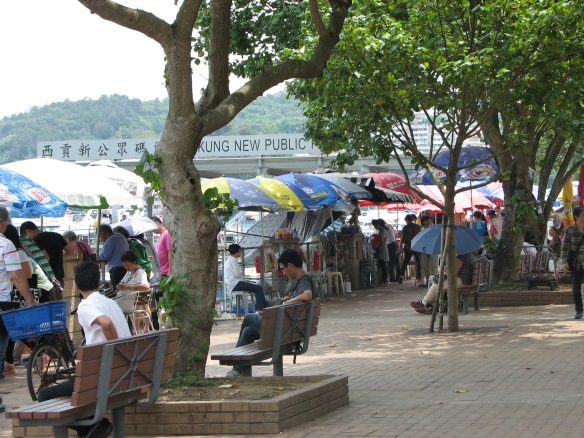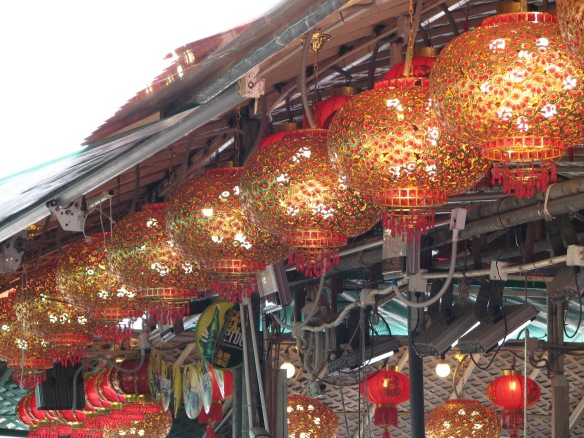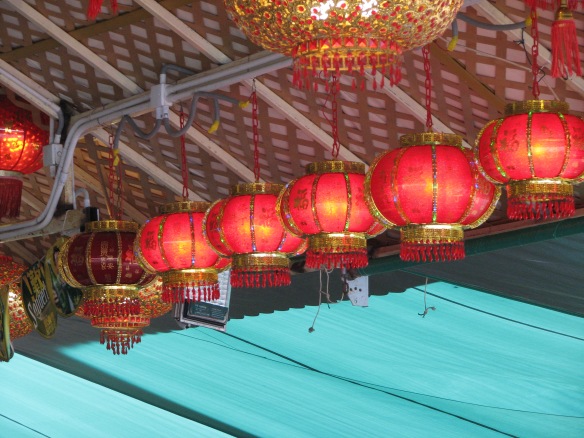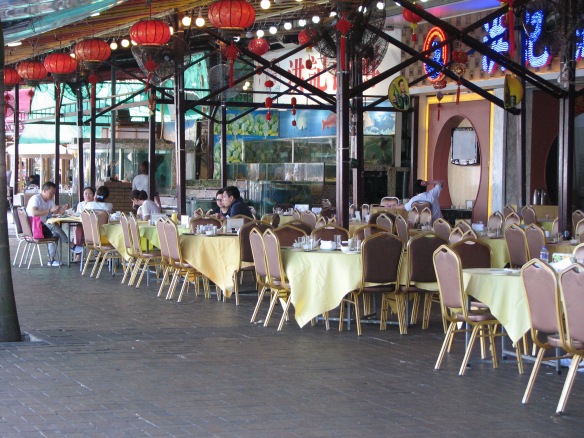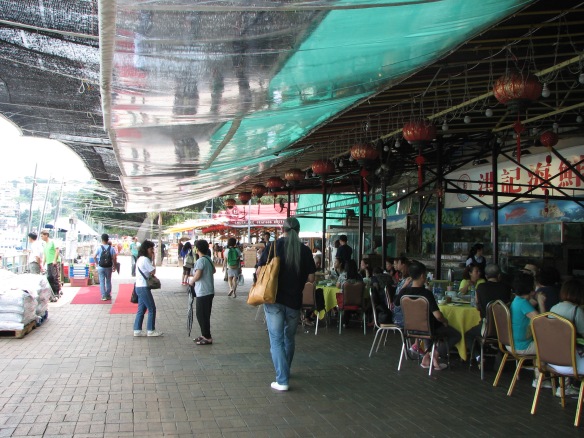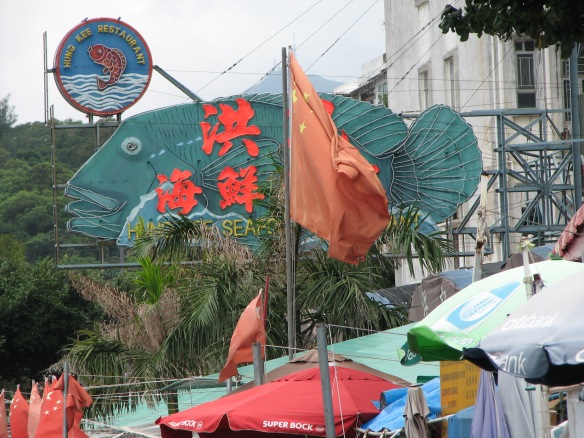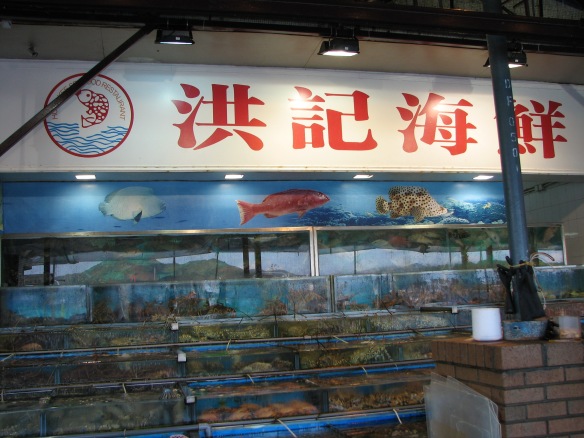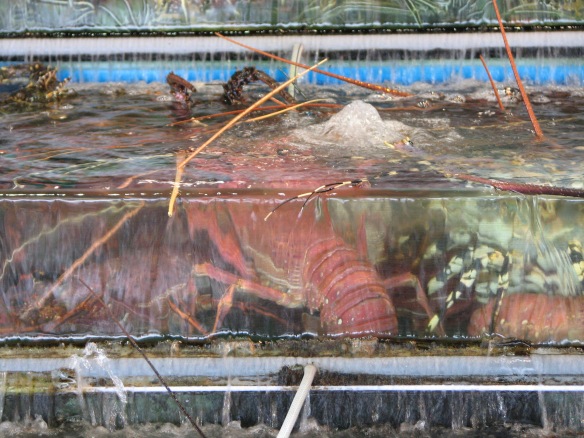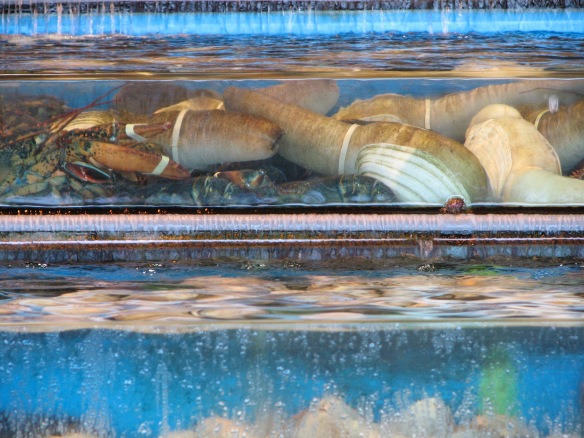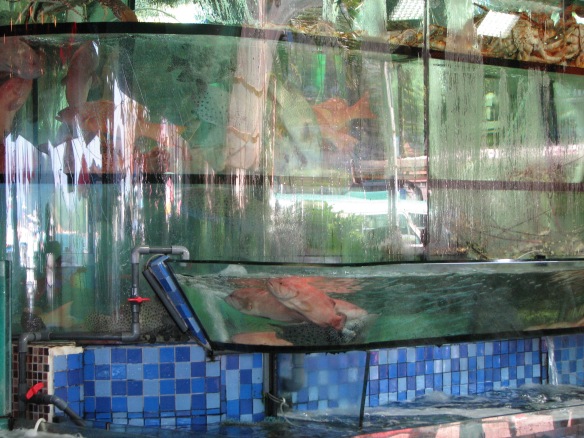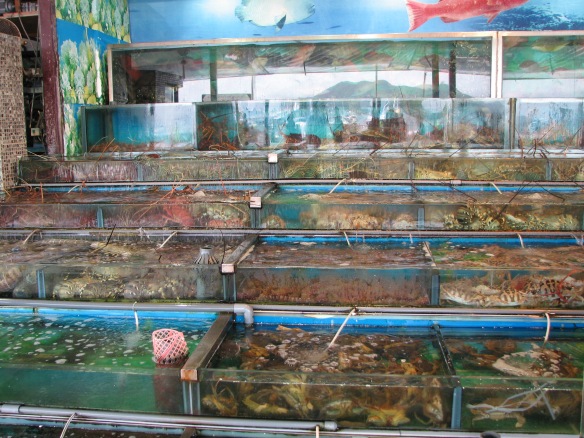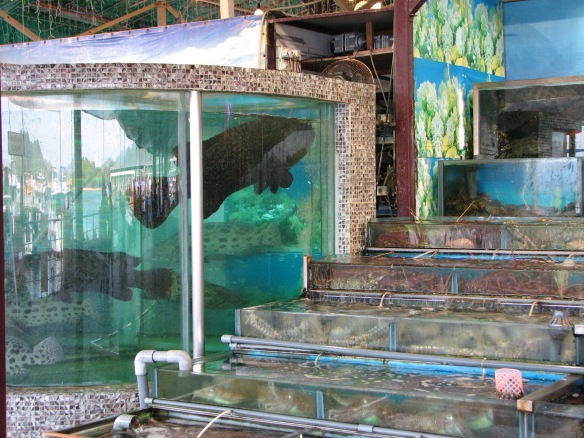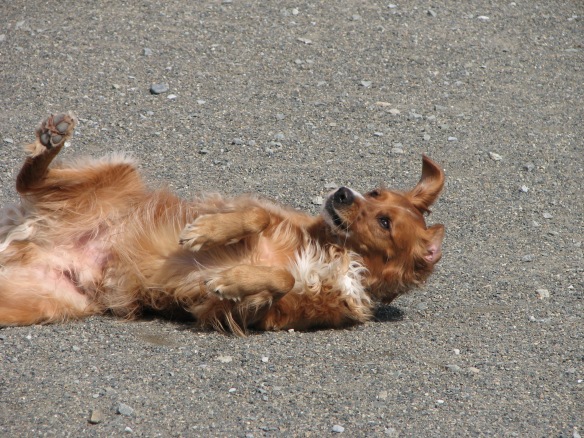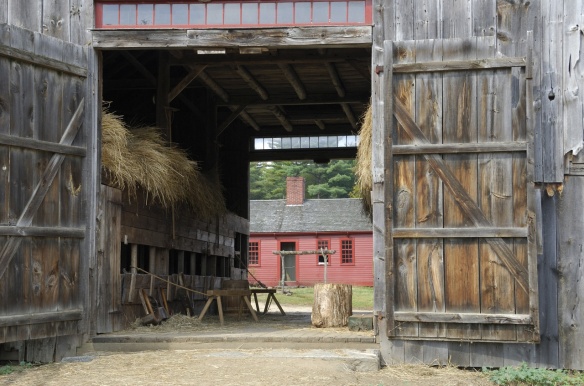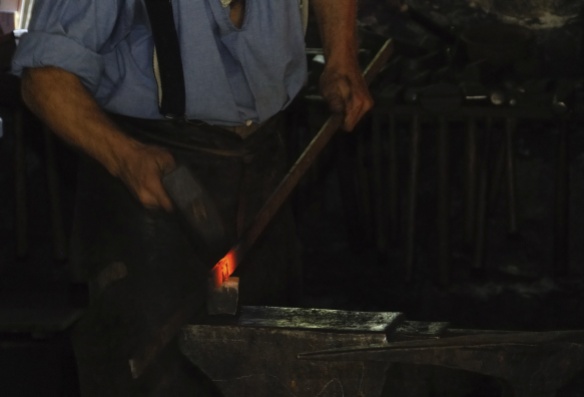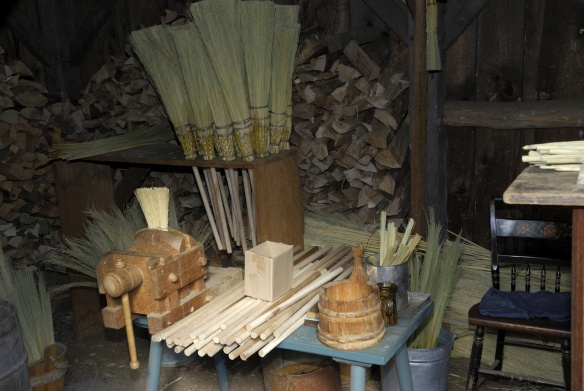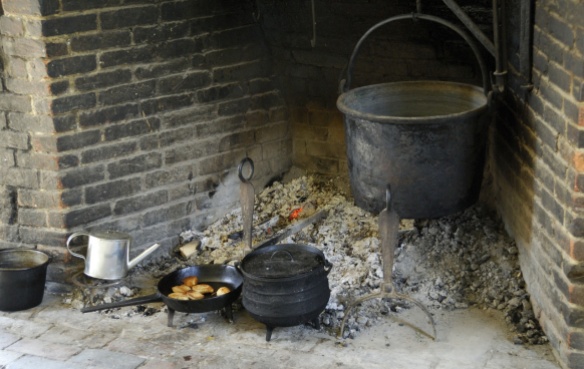I had an encounter with magic in southern Laos. I mean this literally. We flew to Pakse, in order to make our way down to an area called 4,000 Islands. Laos’s border to Cambodia is a stretch of the Mekong River with wild waterfalls and rushing waters. [1] The French ambitiously (and quixotically) tried to build a train through the jungle at Don Det-Don Khon. The rapids defeated them.  We hired a driver and sweet young man named Ley to guide us around. We made an outing to Paksong on the Bolaven Plateau, home of small, superb Laotian coffee plantations.
We hired a driver and sweet young man named Ley to guide us around. We made an outing to Paksong on the Bolaven Plateau, home of small, superb Laotian coffee plantations. 
 On our drive back we stopped at a market hall. Taxis were filling with local workers who stopped to buy groceries.
On our drive back we stopped at a market hall. Taxis were filling with local workers who stopped to buy groceries.  Rows of vendors sold grades of rice,
Rows of vendors sold grades of rice,  eggs, fresh fruit, coffee (natch), bolts of cloth, dried fishes,
eggs, fresh fruit, coffee (natch), bolts of cloth, dried fishes, 
 vegetables and herbs, freshly cooked food and plastic bags of marinades and sauces.
vegetables and herbs, freshly cooked food and plastic bags of marinades and sauces.

 The variety of fresh produce is tremendous: alone in these photos I can identify three different sizes and shapes of eggplant, tomatoes, cilantro, parsley, Thai basil, oranges, peppers in every size and grade of hotness, cucumber, bitter melon, carrots, zuccini, onions, garlic, bok choy, green and Napa (Chinese) cabbages, ginger, limes, long beans, shallots, spring onions, chives, squash, rose apples.
The variety of fresh produce is tremendous: alone in these photos I can identify three different sizes and shapes of eggplant, tomatoes, cilantro, parsley, Thai basil, oranges, peppers in every size and grade of hotness, cucumber, bitter melon, carrots, zuccini, onions, garlic, bok choy, green and Napa (Chinese) cabbages, ginger, limes, long beans, shallots, spring onions, chives, squash, rose apples.
 Women from the hill tribes had wares for sale. An older woman had set up a stand away from most of the others. Curious, I walked over.
Women from the hill tribes had wares for sale. An older woman had set up a stand away from most of the others. Curious, I walked over. She had images of the Buddha, and items for religious and medical purposes. Talons, hooves,
She had images of the Buddha, and items for religious and medical purposes. Talons, hooves,  deer skulls,
deer skulls,  bundles of herbs and animal horns.
bundles of herbs and animal horns. 
Bottles of herb tinctures. Bark. Dried leaves.
I was pulled like a magnet to her strange pairs of roots. I couldn’t tear my eyes from them. I felt fascinated, and somehow frightened, too. She’d tied male and female roots together. They’d been carved to accentuate their human forms.
 The pairs called to me on some strange level…. “What are they for?” I asked. Ley explained to me that they are placed in a home to protect it and the family that lives there.
The pairs called to me on some strange level…. “What are they for?” I asked. Ley explained to me that they are placed in a home to protect it and the family that lives there.
“Would you ask her how much they cost?” I asked. She gave me a sharp look and hesitated. “Ten dollars,” she said finally.
“Ten dollars?” I was beyond surprised. $10 is a paltry sum in most parts of the world. Here, in one of the poorest countries on the planet, the price she wanted was outrageous. [2]
Ley looked confused as well, and talked to her for a while. Her voice rose. The two discussed the transaction so long that I became uncomfortable. At last he turned to me. “She says, these are their gods, and it would be wrong to sell them to outsiders.”
In an instant, desire to be near the figures left me. “I’m so sorry. Please apologize to her and tell her I meant no disrespect. They are very, very powerful.” Ley translated and she gave me a grudging looking-over.
I’ve thought a lot about that strange encounter with foreign magic. Even my husband says he wondered about me that afternoon; he watched with growing concern as I was drawn to something I didn’t understand. All these years later I recall the power that emanated from those male and female roots, and I tremble.
NOTES: [1] For a little while longer, anyway. Hydroelectric dams are being built by northern neighbor China, with breathtakingly little regard or concern for how this impacts the ecosystems further downstream. [2] She purposely asked for a ridiculously large amount of money.
Go to my posts The Salt Pits and The Waterfalls of Laos: North for more on Laos. Photos Copyright © 2012 Uwe Hartmann. More of Uwe’s photography may be viewed at viewpics.de.
http://www.paksong.info
Don Khon narrow gauge railway

Like this:
Like Loading...





 This is the second installment from my blog thread describing what to call groups of animals … See how many you can guess. Answers listed at the bottom of the page.
This is the second installment from my blog thread describing what to call groups of animals … See how many you can guess. Answers listed at the bottom of the page.






 We hired a driver and sweet young man named Ley to guide us around. We made an outing to Paksong on the Bolaven Plateau, home of small, superb Laotian coffee plantations.
We hired a driver and sweet young man named Ley to guide us around. We made an outing to Paksong on the Bolaven Plateau, home of small, superb Laotian coffee plantations. 
 On our drive back we stopped at a market hall. Taxis were filling with local workers who stopped to buy groceries.
On our drive back we stopped at a market hall. Taxis were filling with local workers who stopped to buy groceries.  Rows of vendors sold grades of rice,
Rows of vendors sold grades of rice,  eggs, fresh fruit, coffee (natch), bolts of cloth, dried fishes,
eggs, fresh fruit, coffee (natch), bolts of cloth, dried fishes, 
 vegetables and herbs, freshly cooked food and plastic bags of marinades and sauces.
vegetables and herbs, freshly cooked food and plastic bags of marinades and sauces.
 The variety of fresh produce is tremendous: alone in these photos I can identify three different sizes and shapes of eggplant, tomatoes, cilantro, parsley, Thai basil, oranges, peppers in every size and grade of hotness, cucumber, bitter melon, carrots, zuccini, onions, garlic, bok choy, green and Napa (Chinese) cabbages, ginger, limes, long beans, shallots, spring onions, chives, squash, rose apples.
The variety of fresh produce is tremendous: alone in these photos I can identify three different sizes and shapes of eggplant, tomatoes, cilantro, parsley, Thai basil, oranges, peppers in every size and grade of hotness, cucumber, bitter melon, carrots, zuccini, onions, garlic, bok choy, green and Napa (Chinese) cabbages, ginger, limes, long beans, shallots, spring onions, chives, squash, rose apples.
 Women from the hill tribes had wares for sale. An older woman had set up a stand away from most of the others. Curious, I walked over.
Women from the hill tribes had wares for sale. An older woman had set up a stand away from most of the others. Curious, I walked over. She had images of the Buddha, and items for religious and medical purposes. Talons, hooves,
She had images of the Buddha, and items for religious and medical purposes. Talons, hooves,  deer skulls,
deer skulls,  bundles of herbs and animal horns.
bundles of herbs and animal horns. 


 The pairs called to me on some strange level…. “What are they for?” I asked. Ley explained to me that they are placed in a home to protect it and the family that lives there.
The pairs called to me on some strange level…. “What are they for?” I asked. Ley explained to me that they are placed in a home to protect it and the family that lives there.













 The garter snake is Massachusetts’ official state snake, and is endemic to most of North America. It’s the most common snake species, and closely related to water snakes, the genus Nerodia.
The garter snake is Massachusetts’ official state snake, and is endemic to most of North America. It’s the most common snake species, and closely related to water snakes, the genus Nerodia. I find snakes fascinating. [2] Sacred snakes were used by the Oracle at Delphi and in ancient Minos. Recall the cobra, who spread its hood to shelter the Buddha. St. Patrick supposedly drove the snakes out of Ireland. [3] On a practical level, the garter snakes in Barb and Javier’s yard will eliminate any pest threat from rodents. (They also eat snails and slugs, common garden problems in the wet Northwest.)
I find snakes fascinating. [2] Sacred snakes were used by the Oracle at Delphi and in ancient Minos. Recall the cobra, who spread its hood to shelter the Buddha. St. Patrick supposedly drove the snakes out of Ireland. [3] On a practical level, the garter snakes in Barb and Javier’s yard will eliminate any pest threat from rodents. (They also eat snails and slugs, common garden problems in the wet Northwest.) As I admire the yard and go look from time to time for the two snakes I’ve seen in different parts of the garden, I think mostly about the fact that the presence of snakes means the small biosphere of my sister’s home is a healthy one. It’s not a coincidence that garter snakes are often referred to as ‘garden snakes’.
As I admire the yard and go look from time to time for the two snakes I’ve seen in different parts of the garden, I think mostly about the fact that the presence of snakes means the small biosphere of my sister’s home is a healthy one. It’s not a coincidence that garter snakes are often referred to as ‘garden snakes’.

